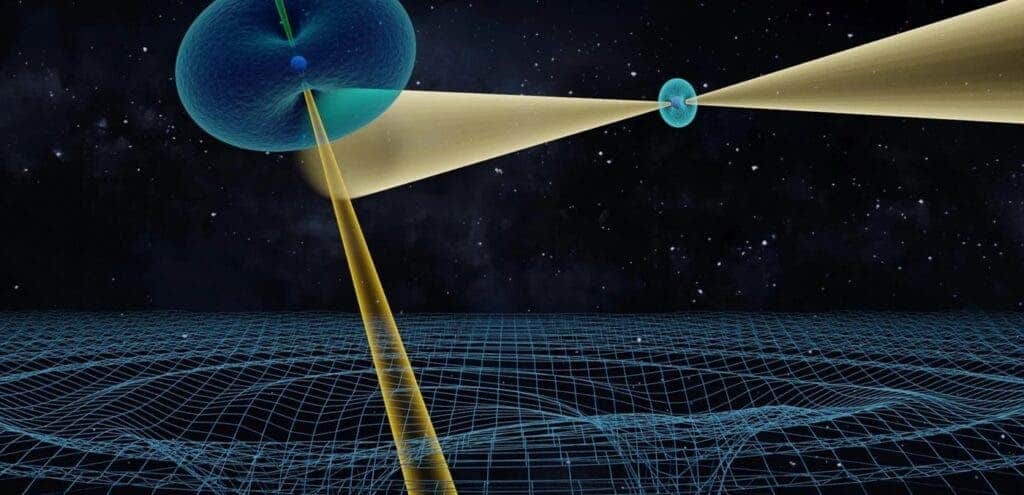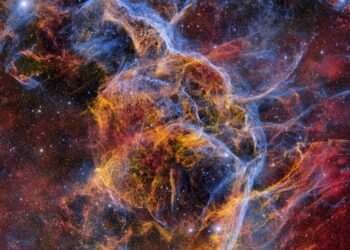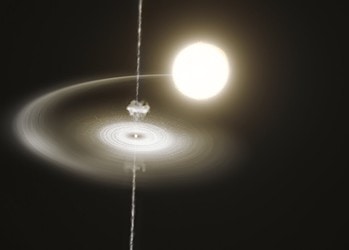
Since Albert Einstein first proposed his landmark theory of general relativity in 1916, it has stood every test scientists have thrown at it, no matter how rigorous — and there were numerous such attempts to find holes in the theory that posits gravity is actually a distortion of the fabric of space-time caused by massive objects. For instance, general relativity has perfectly described observations of stars closely passing the supermassive black hole in the Milky Way’s galactic center or the existence of gravitational waves, whose discovery was awarded the Nobel Prize in Physics in 2017.
Now, scientists have announced general relativity passed with flying colors one of its toughest tests yet, an ambitious observation of a double-pulsar system made by seven different radio telescopes across the world spanning 16 years. According to the researchers led by Michael Kramer from the Max Planck Institute for Radio Astronomy in Germany, the observed effects agreed with general relativity with an accuracy of at least 99.99%.
Pulsars are highly magnetized, fast-spinning neutron stars that emit flashes of electromagnetic radiation out of the poles in opposite directions. These objects are extremely compact, fitting a mass greater than that of the Sun into a sphere the size of a large city. Although the light emitted by these cosmic objects is steady, the beams of light are not aligned with the pulsar’s axis of rotation, so, from Earth’s perspective, pulsars appear to flicker because they also spin very fast. They’re often compared to a lighthouse, for this reason.
Neutron stars are ideal cosmic laboratories for testing general relativity due to their huge gravitational influence. Only black holes are denser and thus more prone to exhibiting extreme effects of general relativity, but pulsars are much easier to observe thanks to their flickering lights and radio signals.
For their new study, the international team of astronomers targeted a unique pair of pulsars (the only pulsar binary system known thus far), known as PSR J0737-3039 A/B, located some 2,4000 light-years away in the constellation Puppis.
One of the two pulsars rotates 44 times a second while the other is much slower, completing a revolution around its own axis every 2.8 seconds. They each are about 30% more massive than the Sun, but measure only about 24 km in diameter. Together, they complete an orbit around a common center of mass in just 147 minutes. This is one very busy system, which produces unusual high gravitational pull and intense magnetic fields — the ultimate testing ground for Einstein’s cornerstone theory, allowing scientists to carry out experiments with a precision 25 times better than single pulsar systems and 1,000 times better than currently possible using gravitational wave detectors.
From 2003 to 2019, seven radio telescopes kept an eye on the double pulsar system, covering the most important bands in the radio spectrum ranging from 334 MHz to 2520 Mhz.
The fast orbital motion of the rotating neutron stars allowed the researchers to test General Relativity on seven different predictors, including gravitational waves, light propagation (light is delayed and bent by gravity), time dilation, mass-energy equivalence (the famous E=mc2), and the effects of electromagnetic radiation on the pulsars’ orbital motion. All seven of these predictors unfolded as observed in the cosmic experiment.
“We needed to find ways of testing Einstein’s theory at an intermediate scale to see if it still holds true. Fortunately, just the right cosmic laboratory, known as the ‘double pulsar,’ was found using the Parkes telescope in 2003. Our observations of the double pulsar over the past 16 years proved to be amazingly consistent with Einstein’s general theory of relativity, within 99.99 percent to be precise,” said Dr. Dick Manchester, a fellow at CSIRO.
Einstein hasn’t been proven wrong yet again — and that may actually be a problem. General relativity is not compatible with other fundamental forces that are described by quantum mechanics. Physicists believe that general relativity must break down at some point in order to account for these discrepancies. Finding a deviation from general relativity would thus open the door to new physics that might eventually unify all the fundamental forces of nature under a single theory.
“We’ll be back in the future using new radio telescopes and new data analysis hoping to spot a weakness in general relativity that will lead us to an even better gravitational theory,” said Adam Deller, Associate Professor from Swinburne University and the ARC Center of Excellence for Gravitational Waves (OzGrav).
The findings appeared in the journal Physical Review X.






